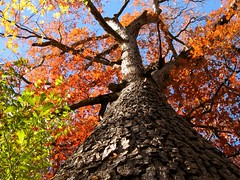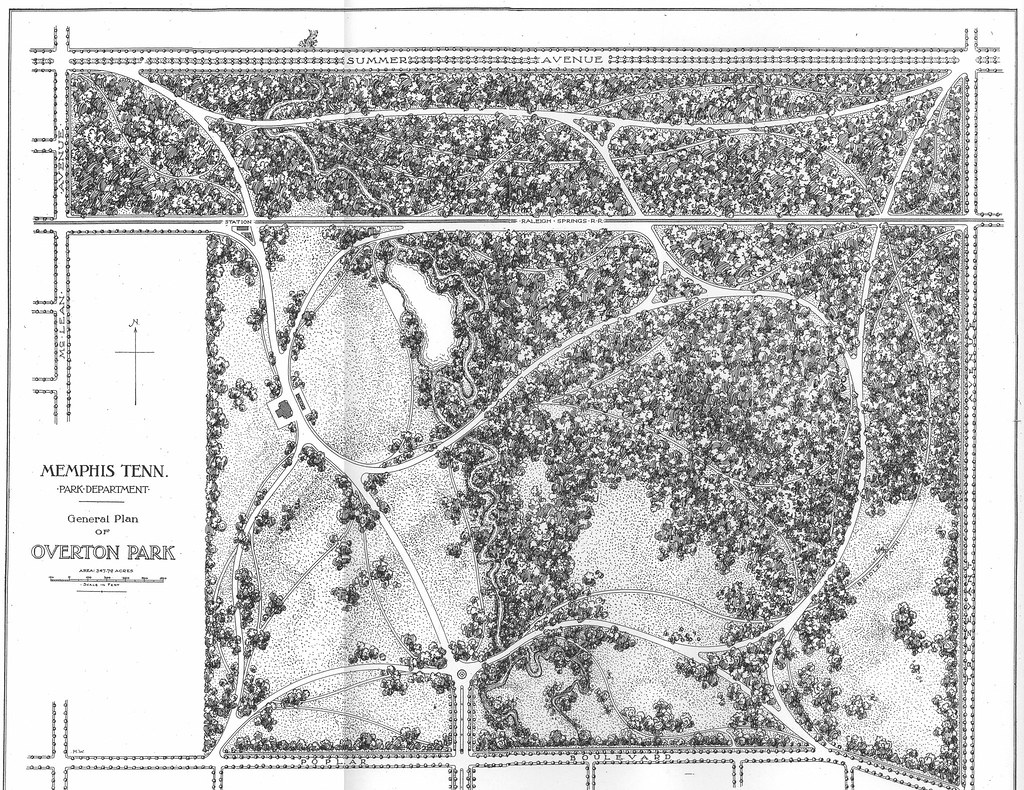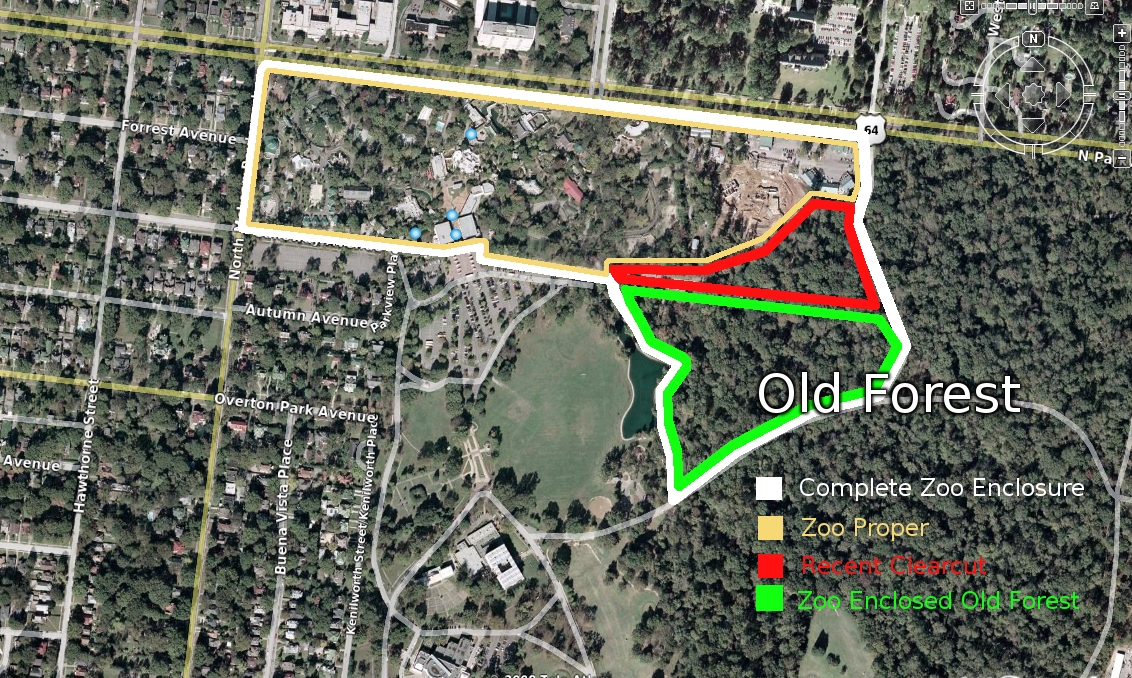A few weeks ago, a man walking in Overton Park was attacked and injured by two teenagers. In response to this unfortunate incident, the president of Park Friends Inc., Glenn Cox, met with Park Services director Cindy Buchanan to ask her to "thin out" the understory of the forest along the jogging trail. CPOP was not invited to this meeting.
On Tuesday afternoon, Glenn emailed me to ask if CPOP would partner with PFI to clear invasive species along the jogging trail "in relation to the recent assault."
I emailed back:
I'm confused -- are you saying that the removal of invasive plant species will reduce crime at the park? I'm not sure how those two issues are related. Thanks for clarifying this.
Glenn replied:
Yes, in that it will open the space between the two paths in a key set of locations. The primary one being the eastern end of the park where honeysuckle has covered several small trees and privet hedge is dotted about. As for making all areas totally visible, it would require the removal of much more than invasive species and we are not willing to make that move. I would venture to guess that 90% of this space will not be touched.
So in the end, we systematically reduce the density in a couple secluded sections and simultaneously remove the forest of unwanted invasive species. Without the known opportunity to increase the physical presence of MPD, this seems the best option. It's sort of a flora version of the "broken window theory"...changing perceptions and showing that people do care when something wrong occurs.
This was starting to sound unpleasantly familiar. I discussed Glenn's emails with my fellow board members and we agreed that it was inappropriate to conflate the social issue of crime with the ecological issue of invasive plants.
On Wednesday, I replied:
Thanks for the info, Glenn.
For clarity's sake, I'm copying your board, the CPOP board, Tom Heineke, and Cindy Buchanan on this email.
I think all of us agree that the supervised removal of non-native invasive plant species, such as privet, is a positive thing for the health of Overton Park's forest.
It's laudable that PFI wishes to demonstrate public solidarity with the man who was recently attacked at the park. We understand that PFI met privately with Cindy last week to decide on a course of action and that you have already communicated your decision to the Memphis Flyer.
CPOP strongly disagrees with the idea that reducing plant density in the forest understory is a viable or desirable way to reduce crime. We ask you and your board to reconsider the assumptions that underly your proposal.
When you respond to a crime in the park with a proposal to clear understory in the forest -- even if that clearing is limited to privet and honeysuckle -- you are telling the public that the recent attack was the fault of the forest, because it provided a hiding place for criminals.
By that logic, we should also strip our city streets of any possible hiding places for would-be muggers -- parked cars, dumpsters, large trees, front porches, etc.
The central premise in your emails below is that the jogging trail is currently unsafe because it has "three or four areas" where the adjacent paved road is shielded from view by vegetation. This implies that you consider the Old Forest nature trails to be completely unsafe.
You say that your proposal to clear 10% of the plants along the jogging trail "does not go to the lengths many would like to see." Should we park advocates adopt the point of view of those who see no value in the preservation of the last surviving remnant of a 10,000-year-old forest? Isn't it our job, rather, to help people understand and value this forest for what it really is?
Public perception can create reality, for better or for worse. I've attached a photo of the jogging trail near the Rainbow Lake entrance. As you can see, there is a large amount of vegetation on either side of the trail -- primarily tall bellflowers in bloom. Is this a peaceful scene of natural beauty or just another hiding place for criminals?
CPOP would be happy to partner with PFI and Park Services on any future projects to remove privet and other invasive non-natives for the purpose of improving the ecological health of the forest. But we cannot support this particular project as long as it promotes the notion that park trails can only be "safe" if they're within sight of a paved road.
Thank you all for your consideration of our perspective.
We were hoping that PFI and Park Services would reconsider this ill-advised clearing project, but given their quotes in today's Memphis Flyer article on the topic, that seems unlikely.
As you can see, CPOP does not object to the careful removal of non-native invasive plants from the forest. But we do object to clearing forest understory in the name of crime prevention. We do not agree with the idea being promoted here: that "brush" and "weeds" are responsible for the bad behavior of people.
And when the president of PFI redefines native poison ivy as an invasive species, then says things like: "If it's just a weed, sorry, but so be it." -- well, that's just not cool with us.
When the only tool you have is a weedwhacker, everything looks like a weed.












2 comments:
I would think bike patrols would prevent crime more than cutting the grass, but that's just me.
great job....keep fighting the good fight.
Post a Comment